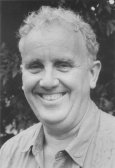

Science and the making of Victoria


|
 |
Did you know that the Society pioneered cremation and debated 'On the advantage of burning the dead' at a social meeting in 1873? Explore the history of the Royal Society of Victoria in The Royal Society of Victoria from then, 1854 to now, 1959 by R. T. M. Pescott, written in 1959 when the Society was celebrating its first hundred years.
Source: La Trobe Picture Collection, State Library of Victoria |
|
Pescott was one of the sixty-four presidents who have served the Society with distinction since 1854. Find out more about the Society's presidents as you read through Science and the making of Victoria by following the links to their illustrated Bright Sparcs entries. Read the inaugural speeches of the Society's first presidents, visionaries who in their public life set the foundations not only for the Society but also for the broad and deep scientific infrastructure that supports modern Victoria. |

|
|
Compare these hopes with those of their twentieth century counterparts, in further writings of past presidents, Edwin Hills, Geoffrey Leeper, Richard Garran, John Lovering and Neil Archbold, as they reflect on the role of the Society and science in Victoria.
|

|
Among the most important work of the Society in the last forty years has been the encouragement of research on the local environment and organisation of symposiums dealing with the regions of Victoria. More recently the Society has been instrumental in establishing the Victorian Institute of Marine Sciences, an interest that dates from biological surveys of Port Phillip in the 1880s. Its Proceedings have been a constant voice, and are a major communication vehicle for the research of Victoria’s natural scientists, particularly those working in the public service.
|
|
The Society's records from 1854 to 1988 are now held by the State Library of Victoria, and you can learn more about the range of their activities through the Guide to Records. Or learn more about the early publication history of the Society's Proceedings in Helen Aston's scholarly account. Gain a fascinating insight to the scientific community of Victoria through the membership lists for 1854 to 1872, which includes addresses, positions held and sometimes papers read, and are linked to more information in Bright Sparcs. Did you know that Frederick, King of Denmark, was a member in 1860 and 1866? (He died in 1863.) Note the familiar names that crop up in the twentieth century Australian scientific community and speculate on the lineage of scientific interest in families. Find out more about the people who shaped the scientific community of Victoria through the Bright Sparcs online historical register, by using the three indexes. |

|
The Royal Society of Victoria had a strong role in nineteenth century Australian science, but this role has waxed and waned in the hundred years since Federation in 1901. From exercising a broad influence in the national and state science arenas, to more specific research in the natural sciences, the Society has always promoted discovery through science and technology. What impact did Federation and the creation of national scientific institutions have on the development of science in Victoria? Look through the eyes of the Royal Society of Victoria in Science and the making of Victoria and find out. |
This project has been made possible through a grant from the Victorian Government through the Centenary of Federation and the Community Support Fund. |

|
 |
This project is the work of the Australian Science and Technology Heritage Centre at the University of Melbourne, in collaboration with the Royal Society of Victoria. |